Select image to enlarge and view caption.
Great Lakes Region
What makes this region unique
The unique characteristics of the Great Lakes Region shape the fish and wildlife that inhabit it. In our Great Lakes Region, you’ll find a diverse landscape spread across the extreme northern part of the state. In this part of Indiana, you can dip your feet in a vast section of wetlands that even includes historic small lakes formed by glaciers. In our region’s drier areas, you can visit rolling prairies that mix with grassy savannas. If you travel along the border of Lake Michigan, you’ll see sandy dunes transition to forests past the lake’s edge.
Not only does the landscape vary in the Great Lakes Region, but the animals differ, too. You may be surprised to know that you could be sharing water with the mudpuppy, an aquatic salamander, hiding under rocks or logs in lakes and rivers of the region. You may see North America’s largest native waterfowl, the trumpeter swan, floating in shallow water in one of the region’s many small ponds, lakes, or marshes. On dry land, you could watch an Eastern massasauga rattlesnake slither among the grasses with its heart-shaped head or witness a Franklin’s ground squirrel duck into its burrow that’s hidden in the prairie grass.
The Great Lakes Region also differs in its drainage system. Since the northwestern and northeastern parts of the state share the same river course, all the rivers and streams flow into Lake Michigan, while the rest of the state’s water flows elsewhere.
The region is also unique in that it is home to fish and wildlife that thrive in its remaining wild places.
State wildlife action planning in the Great Lakes region
In September 2023, partners from the Great Lakes region convened with partners from the Kankakee region to discuss the ecosystems that are in need of conservation in the Great Lakes region. Then, conservation strategies were built around the most pressing threats to these ecosystems. In 2024, we’ll be working with partners to further refine elements of the regional plan. Partners who have not been involved in the work are welcome to participate in the refinement process.
Curious about who has been involved in the process? Check out our list of partners below.
- Thank you, partners!
- Acres Land Trust
- Audubon Great Lakes
- Ball State University
- Clear Lake Township Land Conservancy
- DNR Division of Fish & Wildlife
- DNR Division of Nature Preserves
- Ducks Unlimited
- Fort Wayne Zoo
- Friends of St. Joe River Association
- Global Center for Species Survival
- Goshen College
- Groundwork Indy
- Heartland Restoration Services
- Hoosier Environmental Council
- Indiana Association of Soil and Water Conservation Districts
- Indiana Audubon
- Indiana Conservation Cropping System
- Indiana Conservation Voters
- Indiana Land Protection Alliance
- Indiana State Department of Agriculture
- Indiana University Columbus
- Indiana Wildlife Federation
- National Park Service
- Natural Resources Conservation Service
- Northwestern Indiana Regional Planning Commission
- Purdue Fort Wayne
- Save the Dunes
- Shirley Heinze Land Trust
- State of Indiana Cooperative Invasive Species Management
- Steuben County SWCD
- The Nature Conservancy
- The Wetlands Initiative
- U.S Department of Agriculture-APHIS
- U.S. Fish and Wildlife Service-Private Lands
- University of Indianapolis
- Urban Waters
Interested in learning more about the progress of the Great Lakes regional plan? Contact Elizabeth Mabee (SWAP@dnr.IN.gov; 463-203-3095).
Conservation at work
- Fawn River Dam removal opens river access for fish and paddlers
The Fawn River Dam has served a few purposes since its construction in 1915. First, it was built to help power a local mill. Years later, it was repurposed to fill the brood rearing ponds for the Fawn River State Fish Hatchery in Orland. After the hatchery drilled a well to provide water, it had no need for the dam. Doug Nusbaum, a restoration biologist, worked with Lake and River Enhancement funds and the U.S. Fish and Wildlife Service to fund removal of the dam and plant trees to mitigate the loss of the wetland area.
Removing the dam opened all the riverways to the Lake James chain of lakes in Steuben County. The dam removal not only allowed fish to move across a longer stretch of river, but it also supported native mussel dispersal. Nusbaum takes pride in how the dam removal benefits nature and people. River users originally had to carry their boats around the dam if they floated downstream. Now, people can feel safer as they paddle Fawn River. “A secondary benefit (of this project) is recreation,” Nusbaum says.
Learn more about the Lake and River Enhancement (LARE) program.
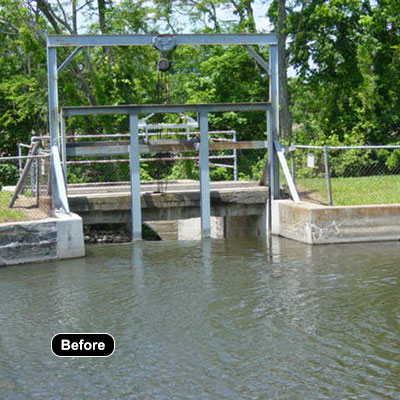
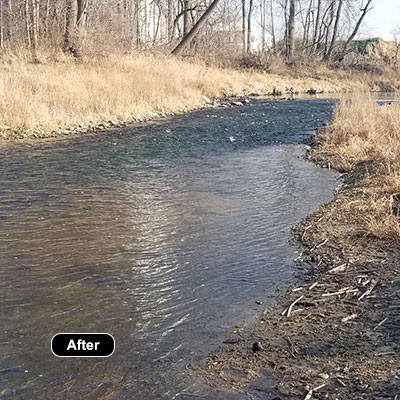
- Waterfowl, reptiles, and amphibians thrive in northeast Indiana wetlands
Wooded and pothole wetlands were once common in northeast Indiana. However, due to land-use change, these habitat types have been declining. Additionally, potholes formed by melting glaciers thousands of years ago were often tiled and drained for farming. Lance Tresenriter, a wildlife biologist, works with the U.S. Fish & Wildlife Service, Ducks Unlimited, Pheasants Forever, and landowners to help restore these lost wetlands on private property.
After their conservation efforts, Tresenriter and his partners saw how their work positively impacted the area. The wetland now catches runoff, filters, and holds water similarly to how it would have 100 years ago. Tresenriter has watched sandhill cranes, waterfowl, reptiles, and amphibians return to use the habitat created, which is rewarding for him and the landowner. “It’s important to positively impact landscape, especially for declining habitat types,” Tresenriter says, noting the value of his work. “It aligns with our mission of protecting species for the people of the state.”
Learn more about habitat and wildlife help for landowners.
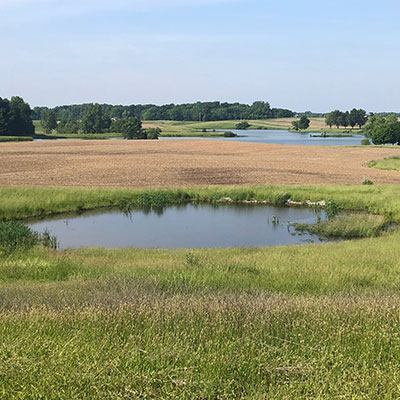
A restored pothole wetland holds water.
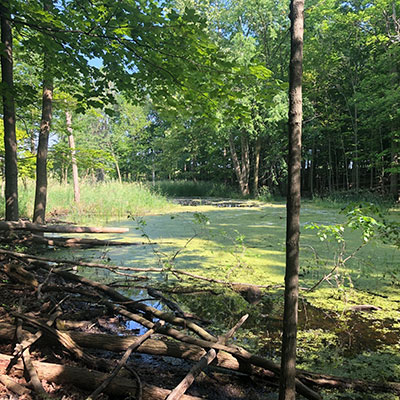
A wooded wetland acts as a home for amphibians and a water filter.

- Large-scale upland and marsh re-wilding project benefits wildlife and people
One of the largest natural areas in northeastern Indiana, Cedar Swamp Wetland Conservation Area (WCA) was previously a lake that served as a tributary for Pigeon River. After the lake was drained for agriculture, Savanna Vaughn, property manager for Pigeon River Fish & Wildlife Area, worked with Ducks Unlimited and the U.S. Fish & Wildlife Service to restore the habitat to its status as a marsh. Together, Vaughn and her partners, including the Indiana Natural Resources Foundation and National Wild Turkey Federation, are in the process of planting 90 acres of the farmed area and part of the uplands to support a habitat for grassland songbird populations and pollinators.
Various types of birds benefit from Vaughn and her team’s conservation efforts. Upland migratory songbirds will be able to use the space, and the marsh can now provide more foraging opportunities for bald eagles nesting in the area. Not only do wildlife benefit from the restoration, but people do, too. As the restoration efforts continue, Cedar Swamp WCA can serve as an area for people to hunt, trap, or view wildlife. Vaughn appreciates the great impact her work has had on Cedar Swamp WCA. “(Our work) makes a big impact in a relatively large area, not just for wildlife, but for people that like birding or enjoy nature,” Vaughn says.
Learn more about Cedar Swamp Wetland Conservation Area.
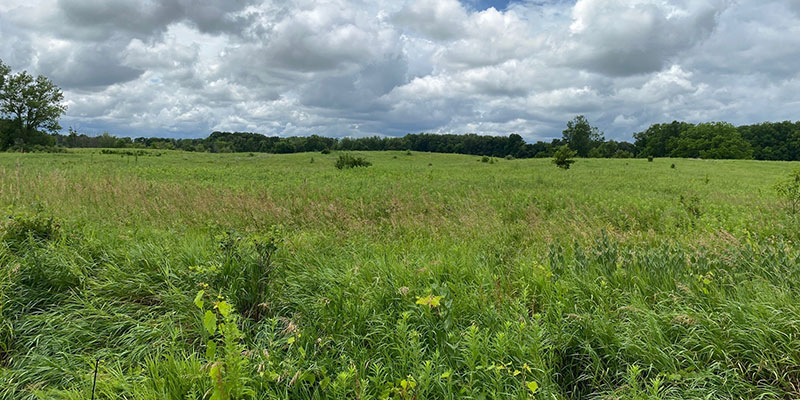
A planted grassland shows early progress on the upland re-wilding project.

- Expansion of grasslands on public land increases wild space for grassland birds and Blanding’s turtles
While Tri-County Fish & Wildlife Area (FWA) has patches of many different habitats, the area contains limited upland habitat where songbirds, pheasants, and Northern bobwhite can thrive. Dericke Lavoine, property manager of Tri-County FWA, was determined to improve and expand the county’s upland habitat with the help of the National Wild Turkey Federation and Pheasants Forever. After spending time grinding down trees and bushes, planting seeds, and using herbicides to control resprouts of invasive species, Lavoine and his team have helped transform the land into an oasis of valuable habitat.
Species like the Northern bobwhite and Blanding’s turtle benefit from Tri-County FWA's restoration, as they now have additional wild space to live. Along with the wildlife populations, Lavoine’s restoration efforts also support people’s well-being. Because Tri-County FWA is sandwiched between the rapidly growing cities of Syracuse and North Webster, people also have access to recreate in the area. Lavoine is happy that he’s fostered relationships with Pheasants Forever and National Wild Turkey Federation to accomplish conservation work. “We can do more together,” he says. “That’s absolutely true.”
Learn more about Tri-County FWA.
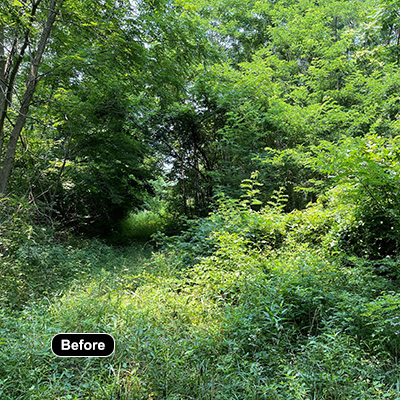
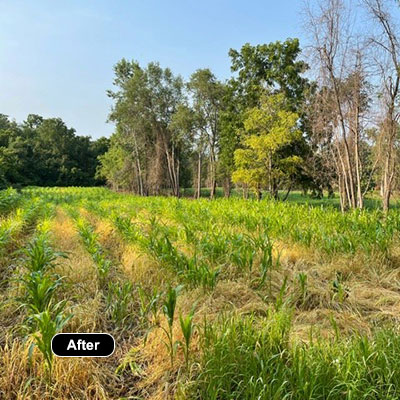
Additional Resources
- Want to learn more about other fish and wildlife that live in Indiana?
- Read about this region in the Indiana State Wildlife Action Plan.
